Selected Topic
Issue 8 - Middle East 2 – Prospects for Architectural Practice (April 2012)
Show articles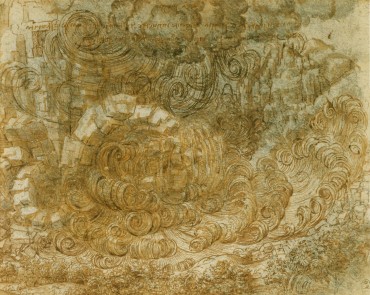
Fig. 1: LEONARDO DA VINCI, STUDY OF A DELUGE, 1515
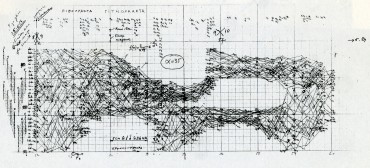
Fig. 2: IANNIS XENAKIS, GLISSANDI FROM PITHOPRAKTA FOR STRING ORCHESTRA, 1956-57
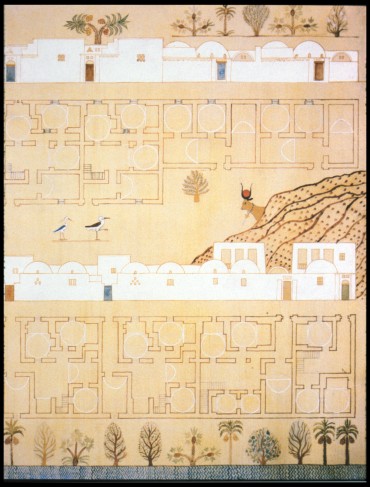
Fig. 3: HASSAN FATHY, NEW GOURNA, GOUACHE FROM “ARCHITECTURE FOR THE POOR”, 1969
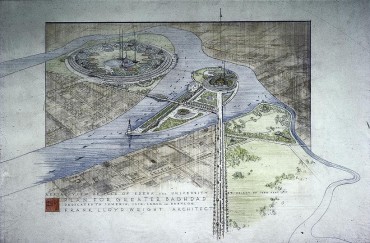
Fig. 4: FRANK LLOYD WRIGHT, PLAN FOR GREATER BAGHDAD, 1957- 58
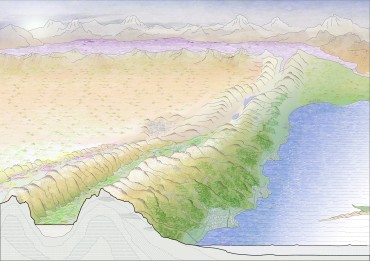
Fig. 5: ME_MED. SOUTH-EASTERN MEDITERRANEAN COAST
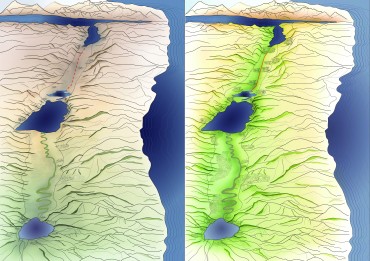
Fig. 6: RED- DEAD. LAKE TIBERIAS - DEAD SEA - GULF OF AQABA RIFT “BEFORE” AND “AFTER”
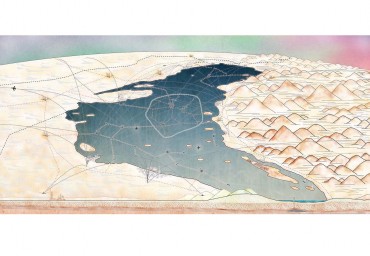
Fig. 7: GLOBAL NETWORKS. PERSIAN GULF
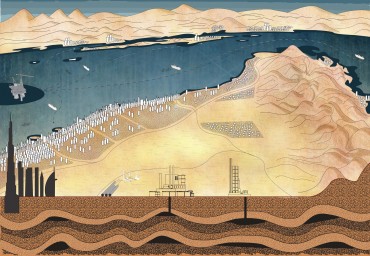
Fig. 8: NARROW WATERWAY. STRAIT OF HORMUZ SEEN FROM THE ARABIAN PENINSULA
4.7.2012 – Issue 8 - Middle East 2 – Ivanišin Krunoslav – Essays
CLOSE-UPS
by Krunoslav Ivanišin
Coincidentally, two dynamically sublime views through window frames of machines in motion mark the beginnings of two “architectural” narratives that have been shaping Middle- Eastern landscapes ever since. In the initial chapter of his 1969’s “Architecture for the Poor”, Hassan Fathy gave a very picturesque account of his early childhood’s discovery of the countryside: “I had always had a deep love for the country, but it was a love for an idea, not for something I really knew. The country, the place where the fellaheen lived, I had seen from the windows of the train as we went from Cairo to Alexandria for the summer holidays…” His social- architectural experiment in New Gourna was only partly successful and yet, Hassan Fathy’s ideal vernacular was parent to an important trajectory in the development of (not only) Middle- Eastern contemporary architecture. Shortly before the military coup of 1958, King Faisal II has invited an international group of architects to “bring back the city of Harun al Rashid today”. Frank Lloyd Wright was assigned a site for an Opera house in the downtown Baghdad. “But as he flew over the city, Wright spied a low island in the Tigris, and soon asked if he could use that instead. Reportedly, the king replied, ‘The island, Mr. Wright, is yours!’” Wright’s truly grandiose project for much more than just an Opera house, he was hoping would encourage democracy in a (re)emerging society, was aborted by a sudden political change. Yet, it was precedent to a long series of iconic projects based on the enormous wealth related to the discovery of oil throughout (not only) the Middle East. Echoes of Fathy’s and Wright’s discoveries still linger, both in the discourse on architecture and in the physical world of construction, much closer to reality but too often devoid of the social concerns and of the utopian aims of the pioneer Wanderers.
An appropriate “minimalist” optic for pondering into the grand view from above by means of our (Google Earth) conceptual microscope was established by Robert Smithson in his works and writings likewise. Once the differences between the endless geomorphic and the short human times or between the scientific truths and the rhetoric appropriations of the natural facts were annihilated, we were granted the possibility to observe geological and infrastructural makes, archaeological tells and contemporary construction sites with same eyes, imposing same criteria to the plastic reality we inhabit. Gradual close ups into the satellite view open endless sequences of potentially sublime experiences: of landforms and landscapes, of infrastructural networks and cities, of architectural objects, finally.
Not coincidentally, Iannis Xennakis’ “architectural” notation of a music piece and Leonardo’s drawing of the Grand Deluge both remind of some extraordinary relief formations, apparent witnesses of the mythical events that have always been provoking in humans reflections on the reason of things. Long before the Cartesian maps were drawn, every location on this planet objectively specified and natural logic behind its formation scientifically explained, the great south- north running River Nile was binding human destiny with the supreme celestial order. Geographical references assembling the idea of the Middle East are high mountain peaks with distant views, fertile but narrow valleys beneath them and, most of all, vast and arid deserts with lush oases and relentless seas with safe islands that surround the region: direction west the Mediterranean with its cultural flux, shadows of the Black and the Caspian Seas from the north, the Red Sea and the Persian Gulf with their own cultural dynamics in the middle of the Middle East, monumental dissolution in the Arabian Sea, broader than the desert itself. Possible scenarios for a mirage are many. Indeed, between the endless sea and the endless desert, the mastaba and the obelisk appear the most logical (architectural) choices.
Deserts and seas do form physical edges of the Middle East. However, caught within infrastructural corridors and networks more intensely today than in the ancient times, they are mediums of communication and cultural exchange too, widening thus the idea of the Middle East. Historical and cultural limits of this region dotted with many forgotten, eternal or entirely new cities, have been shifting and its focal points changing from the very beginning of time. Real and mythical places converge at points of high concentration, packed with glorious past and promising future; large areas between remain virtually devoid (at least on the surface) of any interesting content. But the situation on the idealized map could easily change, as we have often seen: the Middle East has always been in usually unstable middle of the Old World where many exciting stories have begun. Some came to dead ends but others have continued to evolve. Foci of architectural interest are changing too. Not surprisingly, they usually coincide with historical centres of economical, political and cultural power. But occasionally, outstanding architectural works appear in conditions we would not consider that promising at the first glance. Beyond the objective limitations architectural projects normally face, bound to specific contexts, surpassing material constraints or interpreting idealized traditions, they depict an optimistic and diversified image of the region flickering in constant change.
Fig. 1: LEONARDO DA VINCI, STUDY OF A DELUGE, 1515: showing a dramatic, infinitesimal moment of transformation of the face of the earth, based on the close observation of the natural phenomena, it is a visualization of a mythical event as a symbolic image: “how the heavens have descended to the earth...”
Fig. 2: IANNIS XENAKIS, GLISSANDI FROM PITHOPRAKTA FOR STRING ORCHESTRA, 1956-57: graph represents the relation between velocity, sonic temperature and time in a Gaussian distribution - Glissandi are sounds in continuous variations; each line equals one string instrument- 46 in total.
Fig. 3: HASSAN FATHY, NEW GOURNA, GOUACHE FROM “ARCHITECTURE FOR THE POOR”, 1969: discovery of the countryside; invention of the ideal vernacular in an attempt of reconstruction of the static rural society.
Fig. 4: FRANK LLOYD WRIGHT, PLAN FOR GREATER BAGHDAD, 1957- 58: discovery of the metropolis; Opera and Harun Al Rashid statue on the island, bridges over Tigris, University campus at the mainland. One of the aims of this grandiose project was to encourage democracy in the dynamic re- emerging society lubricated by the oil- related wealth.
Fig. 5: ME_MED. SOUTH-EASTERN MEDITERRANEAN COAST: sea- steep mountain- narrow valley- mountain again- empty dessert with urban agglomerations on the fringes; intensive landform for intensive history (Bechara Malkoun, María Ubach)
Fig. 6: RED- DEAD. LAKE TIBERIAS- DEAD SEA- GULF OF AQABA RIFT “BEFORE” AND “AFTER”: expressive landform with different patterns of land use on two sides of the River Jordan and future developments along the Red Sea- Dead Sea Channel (Gauri Gore, Nour Saccal)
Fig. 7: GLOBAL NETWORKS. PERSIAN GULF: endless dessert on one and monumental mountains on the other coast, water with natural riches underneath, cities along the fringes in between (Dhiraj Chilakapaty, Juan Alejo Morales)
Fig. 8: NARROW WATERWAY. STRAIT OF HORMUZ SEEN FROM THE ARABIAN PENINSULA: strategic position, natural riches, barren landscapes and urban forms on two very different coasts of the Gulf (Tarek Berri)
Download article as PDF

